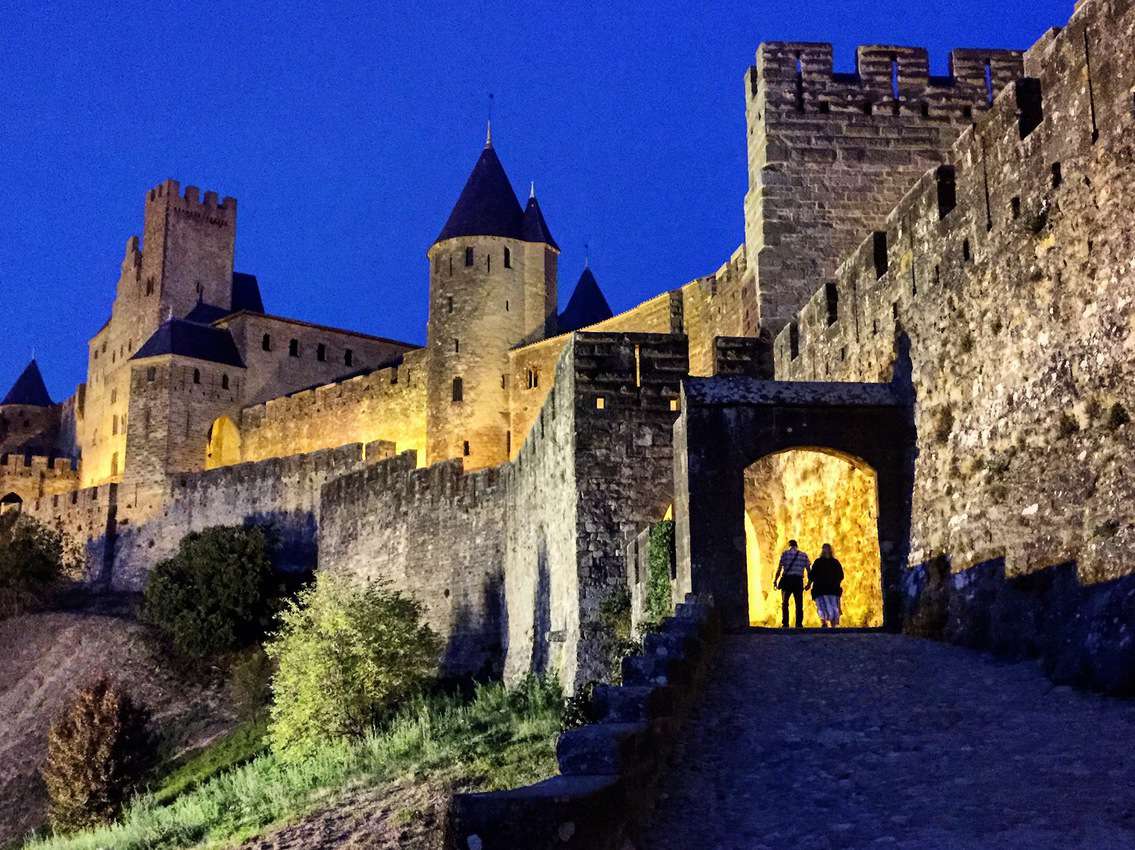
A Dozen Striking Walled Cities of the World
By Rich Grant
Senior Writer

In a big historical context, there’s nothing special about a walled city. Before the invention of rifled artillery, almost every city in the world had a wall or some type of fortification around it.
Even in America. New York’s Wall Street comes from the Dutch word “wal,” which can be translated as “rampart.” The Presidio in San Francisco? “Presidio” is Spanish for fortification.
However, a walled city that has survived intact into the 21st century? That is truly a rarity. In fact, it’s almost impossible to imagine.
After warfare changed and city walls no longer served a purpose, they were a virtual quarry of rocks in the city center, nicely chiseled and just waiting to be torn down to be re-used in churches, homes, public buildings, or any other type of structure.
Interior as Grand as Exterior
Thinking in those terms, it is amazing how many city walls have survived. And what a thrill it is to see them today. Generally, the interior of a 21st-century walled city is just as marvelous as the walls surrounding it.
Whatever preservation spirit worked to save the walls seems to have also been employed to help save the interior. Walkthrough the gates of a genuine walled city, and you are walking into a historical dream.
So here, without order or being an exclusive list, are some of the great walled cities of the world.
Carcassonne, France

Rick Steves calls Carcassonne “Europe’s ultimate walled fortress city,” so why not start here? The skyline of the city with its walls and turrets is probably familiar from countless calendars and films, notably the Kevin Costner version of Robin Hood, Prince of Thieves.
What makes this 13th-century medieval fantasy so attractive is that there are actually two sets of walls, an inner and outer wall, with two miles of ramparts and 52 towers as well as drawbridges, fortified gates, and endless narrow slits from which you can fire imaginary arrows at attackers.
The interior has plenty of tourist shops and can be crowded, but with so many miles of walls, it’s easy to escape them and find your own viewpoints – both in the more modern town below or from the Chateau Comtal, the highest point, which is now a museum filled with plenty of history, a diorama of the fortress, an explanation of how the defenses worked, and views in every direction.
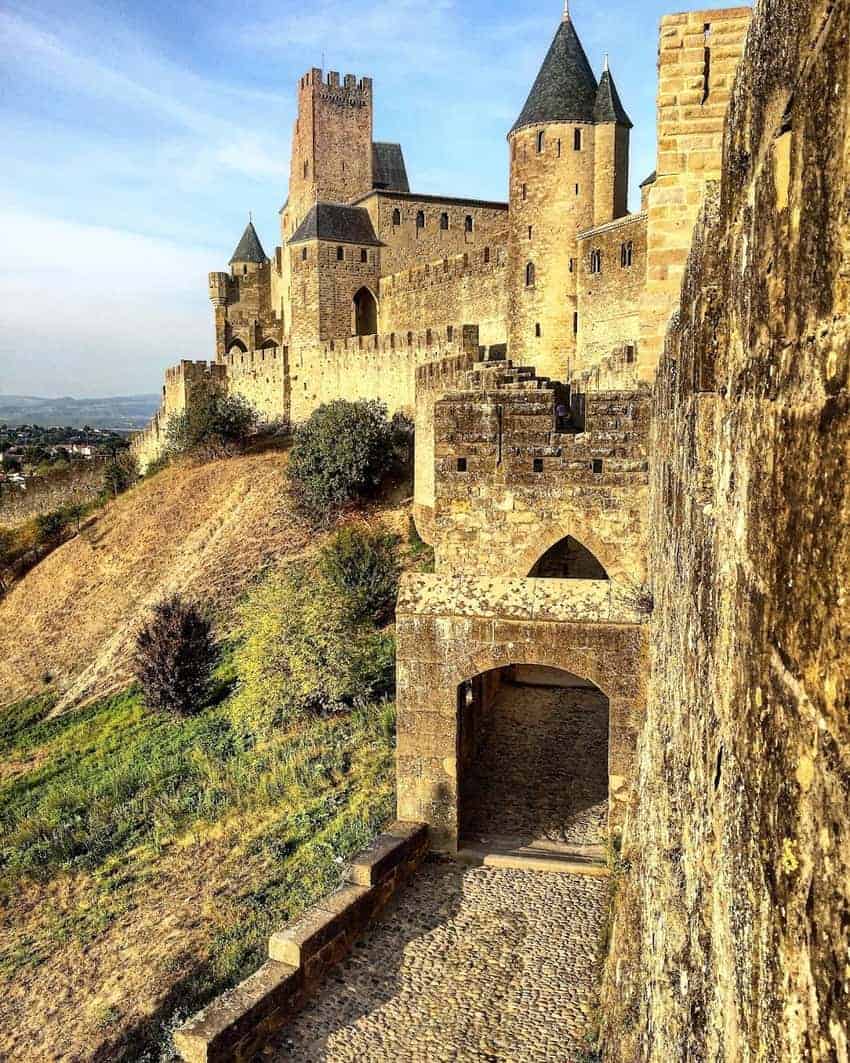
This is as good a place as any to learn the secret that France has very liberal open consumption laws.
You can buy your own bottle of wine, throw a corkscrew and glasses in a day pack, and find a wonderful spot along the walls to enjoy a toast with other locals as the sun sets behind a panorama of rolling hills and vineyards.
No one cares if you bring your own wine, and the French all do it themselves. And once the sun goes down, the entire walls are lit, making for dramatic night strolls along the ramparts.
Just be careful on some of them. The French also don’t bother with guard rails.
Carcassonne is within an easy day’s drive of Barcelona or Bordeaux and makes an excellent overnight stop from either destination.
Old Quebec City, Canada
No trip to Quebec is complete without walking the 4 km of walls that completely circle the Old Town, and the best way is with a National Park walking tour. For some reason, all the guides seem to be young millennial-aged girls with limited interest in the fighting, but charming accents and attitudes.

Quebec City Canada, the Chateau Frontenac hotel looks like a castle and keeps you from getting lost on the backstreets of the Upper Town. This view is from the Citadelle
No worries, there was never any fighting on the walls here anyway. Our guide began by asking, “How many of you are Americans?” Half the group tentatively raised our hands. “Well, these walls were built to keep you out. And until today, they worked.”
The joke is not lost on contemporary Americans who have heard enough about building walls to keep people out. These stone walls are indeed an incredible feat. The United States attacked Quebec during the Revolution and threatened to in the War of 1812 and later again over border disputes.

So in the 19th century, fed up with their bully neighbor, Canadians built the Citadelle, an impregnable “fort within a fort” — the “Gibraltar of America” — a place that was so powerful, it was never attacked.
Today, the star-shaped Vauban fortifications offer a look at 300 years of military architecture. The highlight of the visit here in summer is the daily changing of the guard.
The Citadelle is an active fort and the Royal 22nd Regiment is still stationed here. The colorful, if a tad long, changing of the guard ceremony involves dozens of troops in red coats and bearskin hats marching while a regimental band plays and officers yell orders.
Look for troops who seem to be shorter than the others. They are women. Some 10 percent of the regiment are women, and women participate in the changing of the guard, bear hat and all.
There are two Quebecs within the walls, the upper and lower town (the one on top of the cliff and the one below it). Both are fantastic.
The upper town has a maze of streets, some closed to traffic, and a beautiful wood terrace lined with gardens and cannons overlooking the Saint Lawrence River.
With the towering Chateau Frontenac hotel (which looks like an old castle) as a beacon, it’s impossible to get lost, so the town is best explored by wandering aimlessly, ducking down this alley or taking that street to poke into shops selling maple syrup, Canadian art, Native American handcrafts, fur hats, and wool fashions.
Every third building is a colorful café or bar. Rue Saint-Jean is a fun place at night, offering folk singers who do a mixture of songs in French and English.
The lower town is the oldest area of Quebec, especially at Place Royal, the oldest and most unchanged square of the city that looks much like it would have when Benedict Arnold and the American army attacked in 1775, just a few blocks away. Nearby, the Quartier Petit Champlain is the incredibly picturesque portion of the lower town where centuries-old stone buildings now house 45 shops and restaurants.
Dubrovnik, Jewel of the Adriatic
Thanks to Game of Thrones, this is the most famous – and most crowded – walled city in the world. The 82-foot-high, massive stone curtain surrounding Dubrovnik is 6,000 feet long with ten semicircular bastions and two pocket fortresses guarding the flanks.
While the walls were effective at keeping enemies out from the 10th to 17th centuries, they were failing terribly before the pandemic at keeping out overcrowding from cruise ships. The interior of the town dates mostly to the late 1600s with the wide main street, Placa, lined with outdoor cafes, bars and shops.
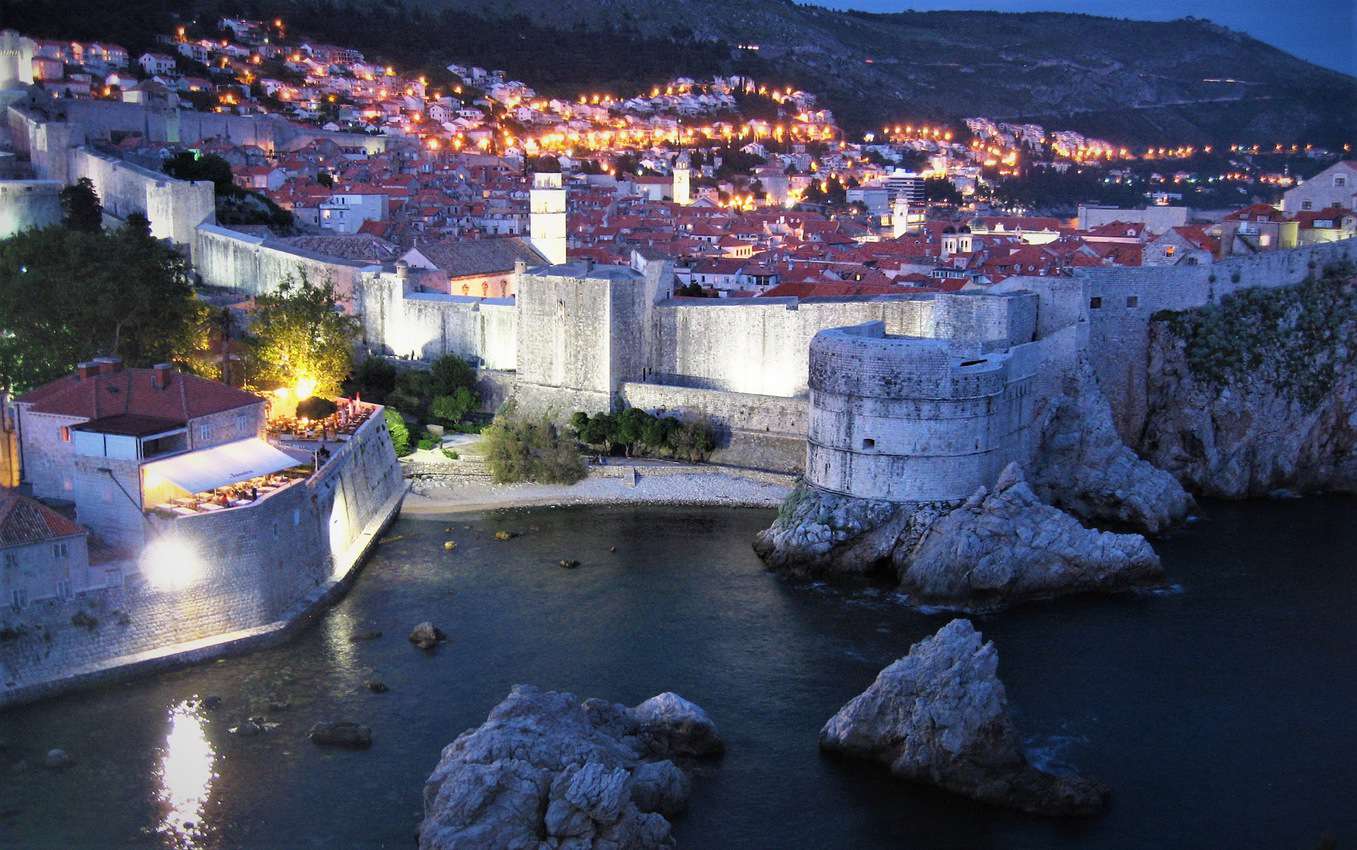
Even though Dubrovnik is traffic-free, it’s too small to handle the large ships, so better to avoid the mid-day crush by taking a water taxi across the bay to Cavtat, an attractive Mediterranean resort with an old stone harbor lined with rustling palm trees and outdoor cafes.
The calm waters in the bay mean that you can enjoy a relaxing waterside lunch with the sea lapping at your feet.
At night, the marble streets of Dubrovnik glow with a sheen that makes it look like it has just rained, while the towering walls are lit from dramatic angles.
What’s most interesting here from a walled city point of view is that during their civil war in 1991-1992, Dubrovnik was hit by more than 2,000 shells and guided missiles, which damaged the roofs in 68 percent of the 824 historic buildings.
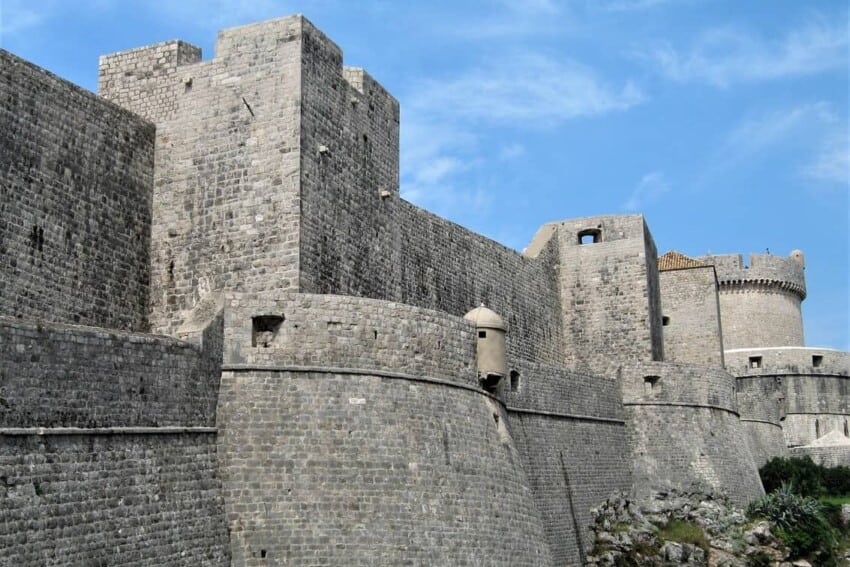
A war museum has fascinating photos, while maps located throughout the city show the location of where every shell hit.
All of the damage has been repaired and it’s amazing to see photos of the main street burning just 30 years ago, then step outside to see lines of people at the gelato stands. But it’s also easy to see why walled cities lost their military value.

Split-Korcula-Trogir, Croatia
As long as we’re in Croatia, there are 1,185 islands just off the rocky Croatian coast, 47 of them inhabited and connected by a large fleet of ferries. Split is the largest city on the coast and can look like an industrial metropolis around the airport, but the old town has a palm-lined harbor and Diocletian’s Palace, the most imposing Roman structure in the world.
Calling it a palace is a bit misleading. It’s actually more of a fortified Roman town that today consists of more than 200 buildings that were built within the old high military walls. Constructed of a white stone that resembles marble, it is a maze of narrow streets and alleys, lined with chic boutiques, galleries, restaurants and outdoor cafes. t
Nearby Trogir is a Unesco World Heritage site – a 15th-century walled town that occupied every inch of a small island. There was only one fortified entrance. Today it is completely pedestrian with twisting streets, hidden plazas, a medieval castle, and a wide waterfront promenade.
Korcula is the real dream – a walled town ringed with palm trees and topped by a sea of red tile roofs. As you arrive on a ferry, it looks like a storybook. It’s a sleepy little place in the day since most people take water taxis to nearby beaches or relax at one of a dozen outdoor cafes that line the ancient fortifications. But in the evening, it is simply wonderful to dine by the sea with the illuminated walls behind you.

Chester and York, England
The two great walled cities of Britain have fought off invaders for almost 2,000 years. Now they fight each other for the title of which is the best walled city in England. Both were founded as Roman forts, Chester in 79 AD, York in 71.
Both were captured at one point by Vikings, both have cathedrals, and both today have near-complete medieval walls that can still be walked on ramparts –Chester’s are 2 miles long and York’s 2.5 miles.
Within the walls, Chester has The Rows, the finest example in England of Victorian black-and-white architecture, constructed here in unique buildings that have two levels of entrances for shops and pubs.
It makes for great calendar photos. York has The Shambles, narrow medieval streets that twist and turn to open into plazas filled with pubs, bookstores, and food shops.
Both towns are fun, though York has far more attractions with a stellar railroad museum, a torture museum, a Viking museum, and a more tourist atmosphere with street buskers and live musicians.
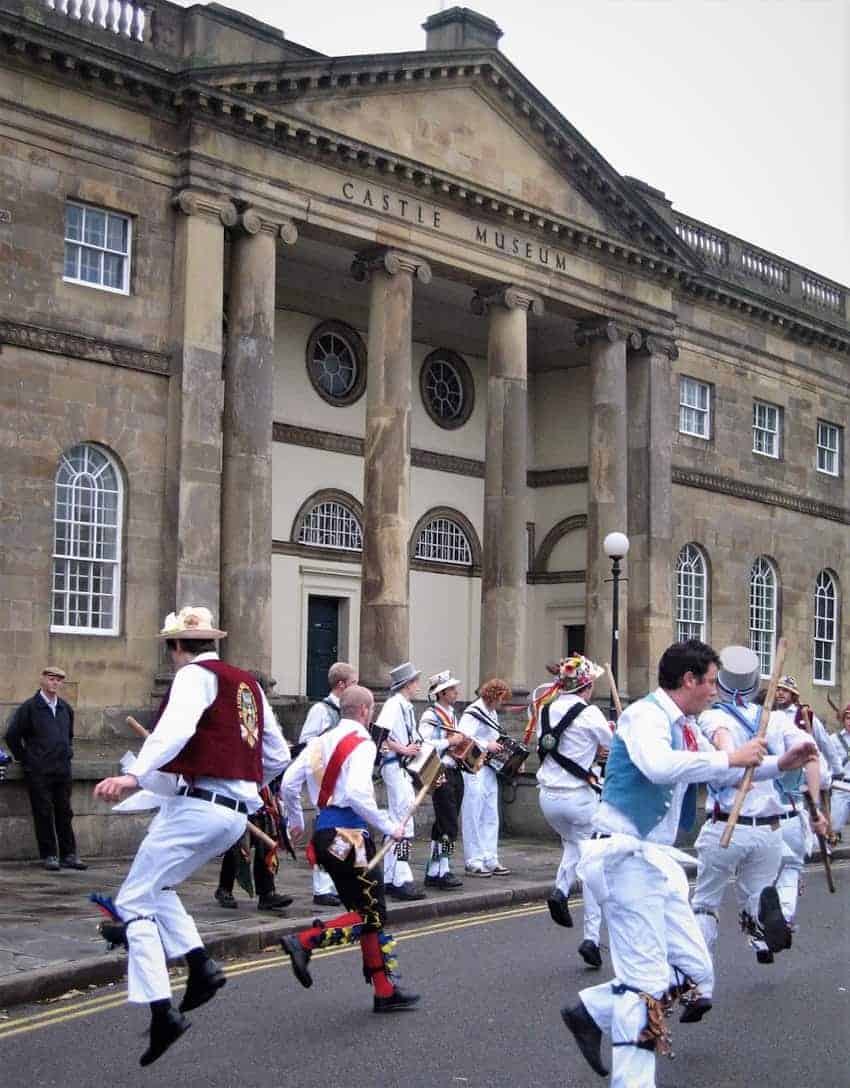
I saw a group of Morris dancers with sticks dancing for tips, as well as an American Indian flute player. It’s that kind of town, and as a result, York can be crowded.
But it’s also on the main road and railroad to that other great walled fortress, Edinburgh, Scotland, so if you have to choose, York is probably your walled town in Britain.
Saint-Malo and Mont St-Michael, France
Saint-Malo is France’s ultimate pirate town, a walled city surrounded by forts that was home to France’s most famous corsairs (legal pirates, authorized by the King to fight the British).
It was the home of Jacques Cartier, who founded Quebec, and because of its military importance, it has some of the evilest looking fortresses in Europe, most notably the National Fort, which can only be entered at low tide.
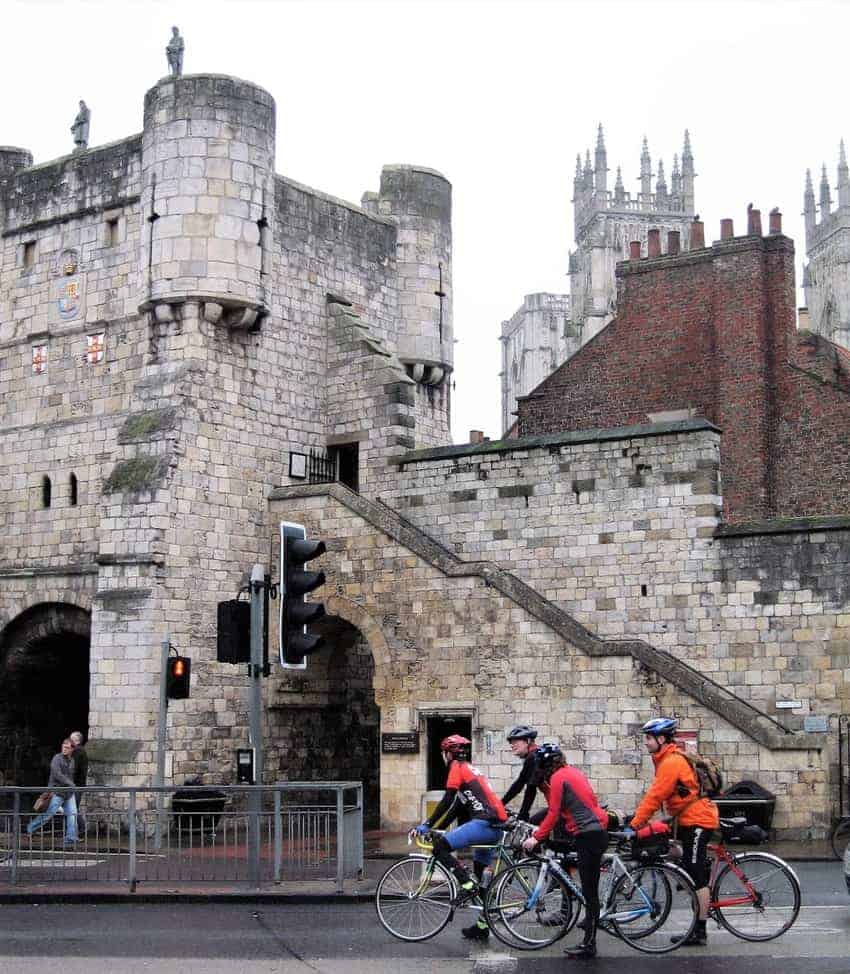
Sadly, 80 percent of the town was destroyed by
American bombers in World War II, but it is the only town in France that was completely rebuilt to resemble its historic appearance. Today, it is also a major beach town resort.
Inside the walls, there are pirate shops, pirate-themed cafes, and statues of pirates.
Outside, there are beaches, boats, swooping seagulls, and corsair ships darting around the harbor, easily spotted because of their distinctive blood-red triangular sails.
Famous Mont St-Michel
Saint-Malo is also within easy striking distance of one of Europe’s top tourist attractions and walled towns, Mont St-Michel. While you should certainly visit this 1,000-year-old abbey and fortress that floats above the water and sand, be warned that it is one of the most famous sights of the world. And therefore crowded.
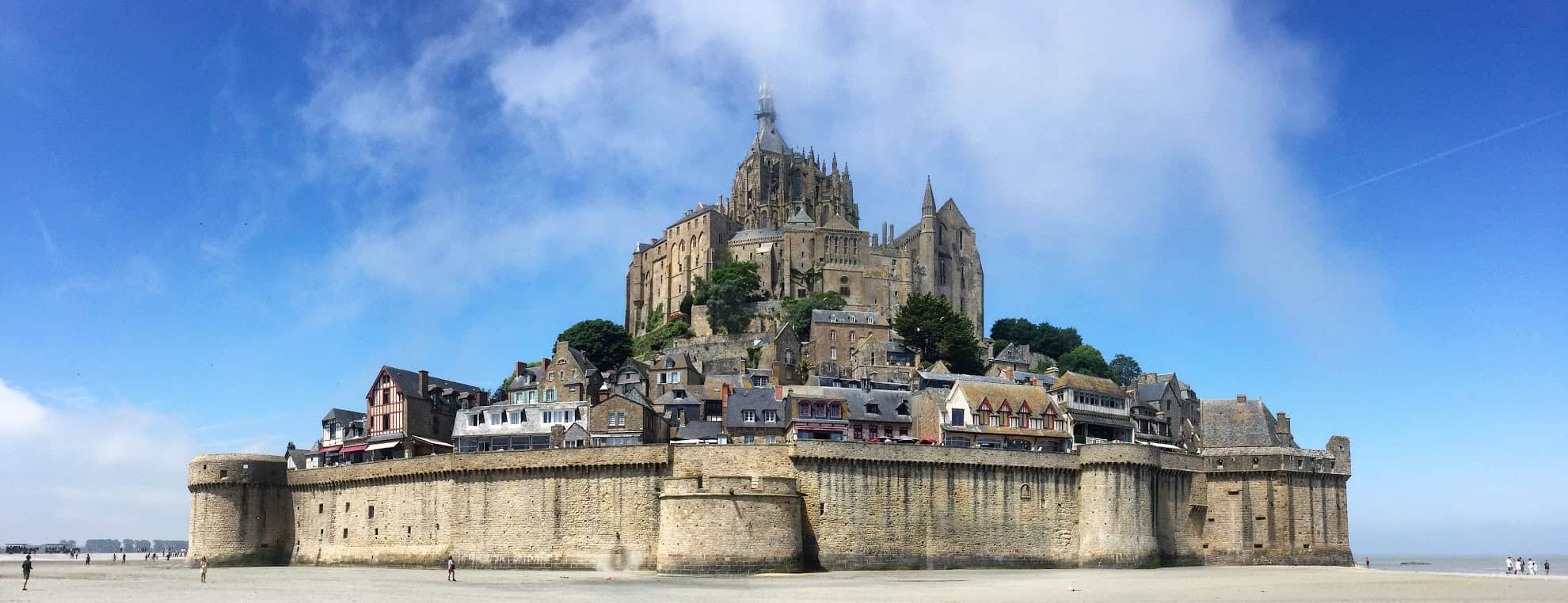
When you tire of its armies of tourists, the packed narrow streets, and the high prices, nearby Saint-Malo will give you a peaceful retreat. If you’re lucky and hit Saint-Malo at low tide and in a twilight fog as we did, the walk across black rock and sand to the looming National Fort with the tricolor floating above it, will be as memorable as any glimpse of Mont St-Michel.

Just remember, the tides come in faster than a galloping horse. Always keep a wary eye on the horizon. The sea is filled with the dead bodies of those who didn’t.
St. Augustine, Florida
At 455 years old, St. Augustine, Florida, is America’s oldest city, but surviving all that time hasn’t been easy.
St. Augustine has been sacked and burned to the ground. Three times! It has been fought over in so many wars that the Spanish, French, British, Confederate, and pirate flags you see flying around town are not just for decoration – they actually represent countries and criminals that at one time or another controlled it.
But what can you expect from a town that was started for one purpose — to fight pirates.
Perhaps the most amazing thing about St. Augustine is that after surviving centuries of hurricanes and bloody warfare, this little settlement, originally located in the middle of nowhere on the edge of swamps filled with mosquitos, rattlesnakes, and alligators, has grown today into one of the most lovely and beautiful cities in the new world.
It is a place of incredible charm with cobblestone pedestrian streets lined with quiet plazas and outdoor cafes shaded by palm trees. There are cute little shops and art galleries. Spanish moss hangs from the trees, while dozens and dozens of 100- and 200-year-old buildings have been repurposed into museums, antique stores, pubs with live music, and candlelit restaurants.
But don’t forget, this is St. Augustine. This means even the oldest buildings can only date back to 1702. That’s the last time pirates sacked the city and burned it to the ground.
In 1672, Spain had enough of pirates, and construction started on the Castillo de San Marcos – the oldest and best-preserved stone fort in the continental United States. Today, the huge diamond-shaped fortress is a National Monument.
You can walk the ramparts along the top of the towering, 28-foot-tall walls, defend the drawbridge, climb out on the bastions for a view of the harbor, and watch cannons being fired by re-enactors in Spanish uniforms. The fort was built of coquina, a soft local stone made of compressed shells.

When the British attacked in 1702, the soft stone absorbed the cannonballs without crumbling, and the fort held out for 50 days. Of course, the frustrated British had to settle for capturing the town, which they burned to the ground before sailing off.
Except for a gate, the walls that surrounded St. Augustine are gone, but with the fortress and a well-preserved historic district, it qualifies as America’s best, almost-walled town.
Rothenburg ob der Tauber, Germany
One of three completely walled towns in Germany, this calendar favorite has a medieval town center and two miles of walls and towers that can be walked, though there are a fair number of stairs and the views mostly peek out onto rooftops.
To get the real view, climb the Town Hall Tower, which looks down on to a pretty square and over most of the medieval center.
While the town is gorgeous with flower boxes, public fountains, narrow cobblestone streets, elegant clock towers and tourist shops, there are two interesting things about Rothenburg that help add it to this list of walled cities. For one, prior to World War II, Rothenburg had special significance to the Nazis, who valued this as the epitome of a German town for its great beauty.
In March 1945, American planes bombed Rothenburg ob der Tauber, destroying nine towers, 306 houses and 2,000 feet of walls, but realizing the historical significance of the town, ground troops negotiated a peaceful surrender, the rest of the town was saved and all the damaged buildings were replaced. Amazingly, the walls withstood the bombing and only the wood structures on top of them were destroyed.
The other interesting thing is the Medieval Crime and Punishment Museum. There are torture museums in many castles and towns throughout Europe, but this one in Rothenburg outdoes itself in the ingeniousness of the devices created to publicly humiliate, shame, torture and execute prisoners. One unforgettable sign said that the torturer could use these screws to crack thumbs, or, “depending on the mood of the executioner, alternatively, big toes.”

Rothenburg is on Germany’s “Romantic Road,” which winds from one beautiful town to another through valleys of vineyards, and lives up to its name along the entire length.
Petra, Jordan
This has to be the most unusual “walled” city in the world because the walls are all natural rock. Somewhere around 312 BC, the Nabataean Arabs built a trading post and thriving city in the middle of a desert by creating an ingenious water system that allowed them to grow wheat, fruit, make wine, and bathe.
A unique feature was that the eastern end of the city was impregnable because it could only be entered through a two-camel-wide, nearly mile-long narrow canyon. The name of the town, Petra, came from the Greek word for rock, “petros.”
Although Petra survived for centuries, an earthquake and changing times led to it being abandoned and only rediscovered by Europeans in the 19th century, and really only “re-discovered” when Harrison Ford rode into it at the end of Raiders of the Lost Ark. Before the Pandemic, Petra was hosting a million visitors a year.
That dropped to zero in March 2020. While the future of travel here remains uncertain, one thing is definite: every one of the million visitors in 2019 who had the privilege to see this place was thrilled.
The entrance today is the same as in ancient times, through a three-quarter-mile gorge of sheer rock walls that at times are only 10-13 feet wide. I had the unusual luck to visit in 1998 with the Society of American Travel Writers on only the third time that Petra had been open at night, the gorge lit by thousands of candles. Of all the “walled” cities of the world, this is one of the bucket-list adventures.
Puʻuhonua o Hōnaunau, Kona, Hawaii Big Island
life was not difficult in this most ideal

climate, but tribal wars and kingdoms could make it a challenge to survive.
Over time, a system of laws known as kānāwai was developed to enforce social order. Kapu (sacred law) regulated things like fishing, planting, harvesting, and how you treated royalty. Breaking kapu could lead to instant death.
Even actions such as touching a royal person, walking in their footsteps, or crossing their shadow could mean death, as could fighting on the losing side of a tribal war.
But anyone who broke kapu could seek forgiveness and an eventual return home unmolested if they could somehow battle their way into the walls of a Puʻuhonua. Of course, this was not easy.
While there were many pu’uhonua in ancient Hawaiʻi, Pu’uhonua o Hōnaunau near Kona is the best preserved and is now a National Historic Monument.
It’s also drop-dead gorgeous. There is a 965-foot- long wall of lava rock shaped like an “L” that was built 400 years ago.

It’s 12 feet tall and 10 feet wide and was built with dry masonry, where craftsman patiently and expertly fitted the rocks together.
The wall, with a few openings, protects two sides of the sacred site, while the ocean guards the other two.
Throughout human history, people have fought and died trying to break into a walled city, usually killing and raping everyone inside if they were successful. Here, crossing the wall meant redemption, peace and a new life.
With the pounding surf and other historic Hawaiian buildings and statues under a canopy of palm trees, well – this is why we visit walled cities in the 21st century – to remind us that no matter how crazy our days may seem today, they are relatively peaceful to what has come before.
- Oklahoma City and the Protest Movement - February 15, 2024
- California, We Still Love You - August 31, 2023
- Western Gunfighting Towns You Gotta See - March 25, 2023




